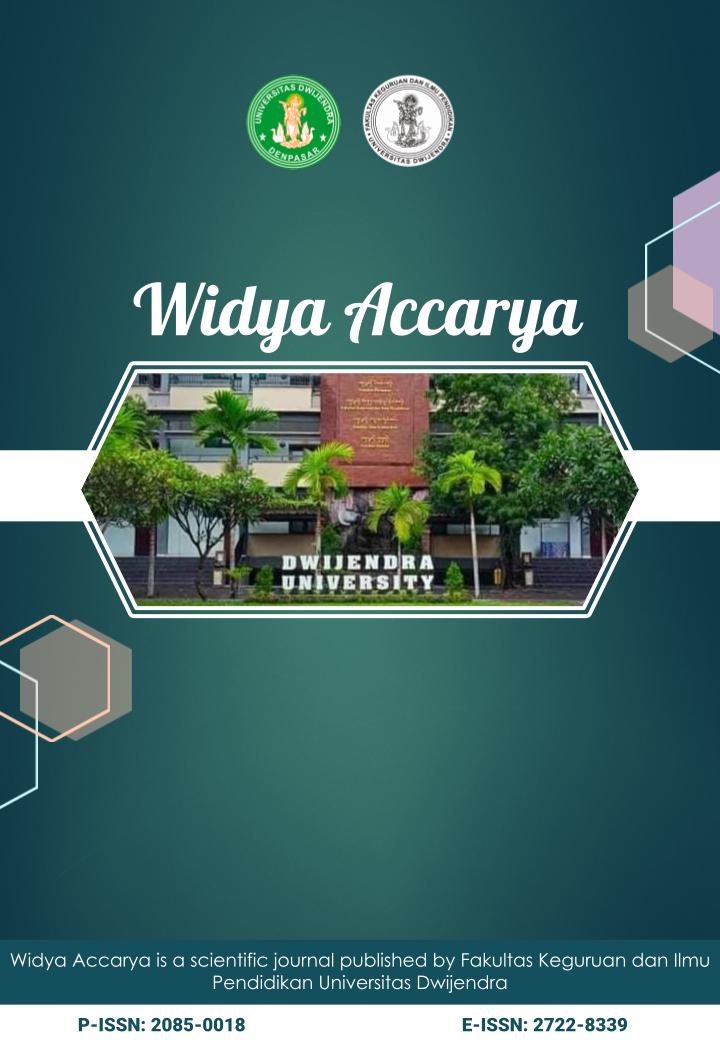Preliminary Needs Assessment for the Development of an Effective Drill-Based Deep Learning Textbook for University Students
DOI:
https://doi.org/10.46650/wa.16.2.1737.236-244Keywords:
Needs analysis, Textbook, Deep learning, DrillAbstract
References
Adhantoro, L. M. A. M. S., Purnomo, E., Kurniaji, & Tribuana, G. (2025). Implementation of Deep Learning in Education: Towards Meaningful and Joyful Learning Experiences. Journal of Deep Learning., 1(1), 47–56.
Bagus, I., Arjaya, A., Hermawan, I. M. S., Putu, S., Surata, K., Sintya, K., Sari, P., Ulan, K., Wati, P., & Dema, K. (2025). Optimalisasi Pengembangan Bahan Ajar Berbasis Deep Learning dan Artificial Intelligence dalam Pendidikan Vokasi. 3(4), 1730–1740.
Branch, R. M. (2017). Cultural-Based Physical Education: The Impact of Traditional Sports on Students’ Physical Fitness and Cultural Identity. Nternational Journal of Sports Science, 8(4), 145-155. https://sci-hub.st/https://link.springer.com/book/10.1007/978-0-387-09506-6
Chen, J., & Singh, C. K. S. (2024). A Systematic Review on Deep Learning in Education: Concepts, Factors, Models and Measurements. Journal of Education and Educational Research, 7(1), 125–129. https://doi.org/10.54097/gzk2yd38
Córdova-Esparza, D. M., Romero-González, J. A., Córdova-Esparza, K. E., Terven, J., & López-Martínez, R. E. (2024). Active Learning Strategies in Computer Science Education: A Systematic Review. Multimodal Technologies and Interaction, 8(6). https://doi.org/10.3390/mti8060050
Freeman, S., Eddy, S. L., McDonough, M., Smith, M. K., Okoroafor, N., Jordt, H., & Wenderoth, M. P. (2014). Active learning increases student performance in science, engineering, and mathematics. Proceedings of the National Academy of Sciences of the United States of America, 111(23), 8410–8415. https://doi.org/10.1073/pnas.1319030111
Jenny Obligado Duppins, M. (2023). Effect of D.E.S.I.R.E. (Drill Exercises Towards Students’ Increased Responsive Engagement) on the Improvement of Higher Math Skills. American Journal of Educational Research, 11(5), 279–286. https://doi.org/10.12691/education-11-5-5
Lehtinen, E., Hannula-Sormunen, M., McMullen, J., & Gruber, H. (2017). Cultivating mathematical skills: from drill-and-practice to deliberate practice. ZDM - Mathematics Education, 49(4), 625–636. https://doi.org/10.1007/s11858-017-0856-6
Naseer, F., Khan, M. N., Tahir, M., Addas, A., & Aejaz, S. M. H. (2024). Integrating deep learning techniques for personalized learning pathways in higher education. Heliyon, 10(11), e32628. https://doi.org/10.1016/j.heliyon.2024.e32628
Prihantini, P., Sutarto, S., Apriliyani, E. S., Stavinibelia, S., Arsyad, M., & Mukhtar, D. (2025). Deep Learning Approaches in Education: A Literature Review on Their Role in Addressing Future Challenge. TOFEDU: The Future of Education Journal, 4(5), 1213–1220. https://doi.org/10.61445/tofedu.v4i5.532
Rosyidah, W. M., Suprayitno, E., & Naf’an, M. (2025). Pengembangan Modul Ajar Materi Peradaban Pra Islam dengan Pendekatan Deep Learning. Advanced Journal of Education and Religion, 2(2), 18–25.
Sakman, Abdulkarim, A., Komalasari, K., & Masyitoh, I. S. (2024). Unveiling the Merdeka Curriculum: A Review of Local Wisdom Integration in Civic Education for Junior High Schools. KnE Social Sciences, 2024, 200–208. https://doi.org/10.18502/kss.v9i19.16496
Sudirman, S., & Zain, M. I. (2023). Application of The Drill Method to Improving Science Learning Outcomes. Jurnal Penelitian Pendidikan IPA, 9(4), 1886–1891. https://doi.org/10.29303/jppipa.v9i4.3649
Sun, L., Wang, J., Gong, & Jiang, N. (2023). The Effectiveness of Implementing Deep Learning Activities in a Blended Learning Perspective Based on Big Data Analysis. In Proceedings of the 2022 International Conference on Educational Innovation and Multimedia Technology (EIMT 2022). Atlantis Press International BV. https://doi.org/10.2991/978-94-6463-012-1
Tian, X., Park, K. H., & Liu, Q. (2023). Deep Learning Influences on Higher Education Students’ Digital Literacy: The Meditating Role of Higher-order Thinking. International Journal of Engineering Pedagogy, 13(6), 33–49. https://doi.org/10.3991/ijep.v13i6.38177
Wang, L. (2023). On the Current Situation of the Selection of PEP Junior English Textbook Illustrations. OALib, 10(10), 1–10. https://doi.org/10.4236/oalib.1110740
Weng, C., Chen, C., & Ai, X. (2023). A pedagogical study on promoting students’ deep learning through design-based learning. International Journal of Technology and Design Education, 33(4), 1653–1674. https://doi.org/10.1007/s10798-022-09789-4
Wiggins, G., & McTighe, J. (2006). Understanding by Design (2nd ed.). Association for Supervision and Curriculum Development (ASCD). Understanding by Design, 1956, 1–18.
Zhang, X., & Cao, Z. (2021). A Framework of an Intelligent Education System for Higher Education Based on Deep Learning. International Journal of Emerging Technologies in Learning, 16(7), 233–248. https://doi.org/10.3991/ijet.v16i07.22123
Zhang, Y., & Qiu, X. (2024). Exploration of Teaching Mode Combining Theory and Practice in Deep Learning Courses. Journal of Education and Educational Research, 10(2), 26–29. https://doi.org/10.54097/cv4n9484
Downloads
Published
How to Cite
Issue
Section
Citation Check
License
Copyright (c) 2025 Subhan, Salahudin, Mariamah, Muhammad

This work is licensed under a Creative Commons Attribution-ShareAlike 4.0 International License.
An author who publishes in the Widya Accarya agrees to the following terms:
- Author retains the copyright and grants the journal the right of first publication of the work simultaneously licensed under the Creative Commons Attribution-ShareAlike 4.0 License that allows others to share the work with an acknowledgement of the work's authorship and initial publication in this journal
- Author is able to enter into separate, additional contractual arrangements for the non-exclusive distribution of the journal's published version of the work (e.g., post it to an institutional repository or publish it in a book) with the acknowledgement of its initial publication in this journal.
- Author is permitted and encouraged to post his/her work online (e.g., in institutional repositories or on their website) prior to and during the submission process, as it can lead to productive exchanges, as well as earlier and greater citation of the published work (See The Effect of Open Access).
Read more about the Creative Commons Attribution-ShareAlike 4.0 Licence here: https://creativecommons.org/licenses/by-sa/4.0/.

















